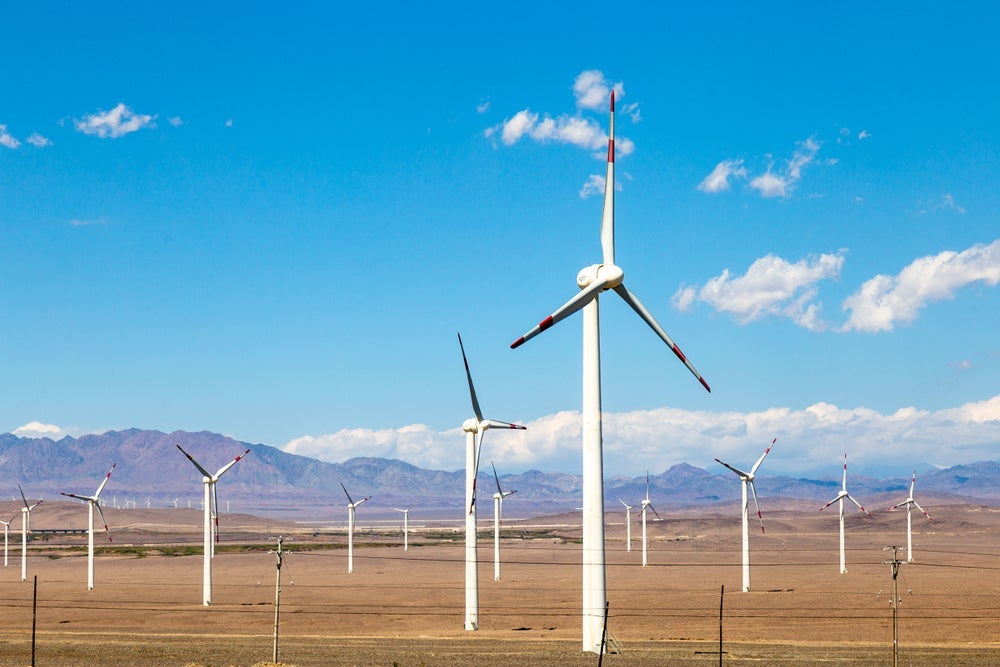
Climate change and modern technologies are transforming the global electricity sector, with Asia-Pacific economies like China and India experiencing huge growth. Additionally, ageing grid infrastructure in the US and Europe means that upgrading old systems and power lines for the transmission, storage and management of renewable energy is one of the most critical elements of the energy transition today.
Following the COP28 held in Dubai, a survey was conducted in early 2024 by the World Energy Council capturing the perspectives of 1,800 energy leaders from across 100 countries, providing a snapshot of the global energy landscape. The World Energy Issues Survey shows that as well as current geopolitical issues around energy security, one of the top five concerns of leaders was transmission grid strengthening and expansion, with flexible energy storage solutions.
Saying that ‘there is no transition without transmission’ the WEC survey highlights the need for urgent action and investment for building resilient grids to meet rising energy demands and integrate renewable energy.
The survey also quotes the latest report by the International Energy Agency (IEA) World Energy Outlook 2023, which states that investment in clean energy has risen by 40% since 2020. With one in every five new cars sold currently electric (EV) manufacturing capacity for key components of clean energy systems, including PV modules and EV batteries, is expanding fast.
However, the IEA also warns there is currently insufficient grid infrastructure, noting that 1,500GW of renewable projects are waiting for a transmission link, and that for countries to reach climate goals, over 80 million kilometres of grids must be installed or refurbished by 2040i.
The renewable energy transition is now at a crucial phase, with both private and state power companies investing heavily in new technologies to help them reach net-zero emission targets and limit global warming.
Next-gen leaders within the energy sector
João Graça Gomes is Head of R&D at the Sino-Portuguese Center of New Energy Technologies, a joint venture between China Three Gorges Corporation and EDP. He has experience as a renewable energy policy analyst and is also a board member of the exclusive FEL 100 (Future Energy Leaders 100) program from the World Energy Council, and Member of the Studies Standing Committee.

Gomes says we need a new generation of energy leaders to step up and tackle global challenges, including the future of energy, through active partnerships and by showing leadership in a low-carbon economy.
Speaking to us at the 26th World Energy Congress, Rotterdam, Gomes explains that working together, across the globe, is a key factor for the energy transition:
“Global problems – like climate change – demand global solutions. We all suffer the same problem of climate change and air pollution. We all want a better quality of life, a growing economy and secure energy systems. We need people that are motivators, with a different vision of the world. Future Energy Leaders is exactly this community. It brings all these people together. With a common objective of achieving energy security and affordability, which is very important to improve our communities and environmental sustainability.”
Global energy trends
Current trends are moving fast and in the last few years, Gomes says there have been significant developments, particularly in energy storage systems and electrification.
“We are noticing an increase in more renewable electricity generation – wind, solar – with costs for these already decreasing,” he says. “We are reaching a point where battery storage is becoming mainstream. Chemical storage, electrical storage, is growing worldwide.
“Another trend we see is in the jump in electrification, especially in the transport sector. Transportation accounts for one third of global energy demand. Now we are seeing rapid electrification, being led by China.”
One crucial trend is the upgrading of power lines to enable more flexibility in the power grid, including better management of variable renewable electricity, essential for getting power from remote areas to large cities, along with increased preference for voltage source converters, due to them being simple, modular, and flexible in operation.
“Solar and wind are often in remote areas,” says Gomes. “In the case of China, the majority of resources are in Xinjiang, Tibet and Inner Mongolia, but most of the demand is nearer the coastline of China, like Shanghai and Shenzhen. One development is the conversion of AC lines to DC lines. DC lines have lower energy losses and are essential to transmit electricity over thousands of kilometres in countries like China, or even Africa when talking about the development of solar PV projects in the Sahara.”
However, of all the trends he is seeing, Gomes says one stands out: fully utilising the benefits of digitalisation within the sector.
Global digitalisation is increasing due to advances in AI and faster processing. Real-time visualisation technology, known as digital twins, can remotely monitor power plants and electrical power cables, leading to increased flexibility in the power grid, minimising power outages and even forecasting future faults.
“I think digitalisation tools are a real game changer,” says Gomes.
How digitalisation is evolving within the sector
In his role as a Member of the Studies Committee of the World Energy Council, Gomes recently visited a project between technology company Huawei and the State Grid Corporation of China (State Grid Shaanxi) looking specifically at this question of digitalisation and the use of information communication technology within the power sector.
“It was very interesting, because Huawei is a company focused on communication and has been one of the leaders in ICT (Information and Communications Technology),” Gomes tells us. “Now we are seeing them cooperate with the power sector. We need better communication technologies for the energy sector – faster communication that will allow us to identify problems in power lines.
“We also need to increase the accuracy of smart meters. Measuring more accurately the demands and supply of our households. Huawei is helping with this, creating a digital environment of the grid systems.”
Digitalisation is key to managing such a large grid and all its peripheral systems. Gomes’ visit was to explore the advantages of partnerships with communication and ICT companies, like Huawei, and power grid companies like State Grid Shaanxi, focusing on reducing the frequency of breakdowns and downtime to repairs, as well as promoting global benefits like fewer line losses and more DER connected to the grid.
“State Grid Shaanxi covers a huge area, similar in size to a small European country,” says Gomes. “Using digital twin technology developed with Huawei, they can already predict when a problem will happen, or at least have a probability of malfunction, and then they optimise the workforce. This will increase the efficiency of supply and reduce the number of outages.”
Partnership with Huawei: a win-win solution
Gomes explains that to establish a successful partnership, there needs to be honesty, good information exchange, and similar ethics. “We have the wisdom of a state-owned company, combined with an innovator like Huawei. I think that’s a win-win solution,” says Gomes.
In this instance, Huawei’s innovation is utilising digital solutions to modernise power distribution networks. Known as the ‘last mile’, it ensures delivery of electricity directly into consumers’ homes, as well as businesses and industry.
Huawei’s Intelligent Distribution Solution (IDS) optimises power distribution, improves grid reliability, and facilitates renewable energy integration. The IDS architecture uses a “cloud-pipe-edge-pipe-device” framework, including private cloud, backhaul network solutions, an edge computing unit, and next-generation high-speed power line carrier communication. This approach offers real-time measurable observations, allowing utility companies to optimise operations and cut costs by finding and fixing issues before they occur.
In collaboration with State Grid Shaanxi this solution has already transformed the management of over 100,000 distribution transformer districts, lowering outage durations and attaining an exceptional power supply reliability rate. It has also enabled the seamless integration of over 50,000 residential PV (solar panel) sites and more than 1,000 large scale 10kV PV sites.
Huawei says that the IDS system has also shown excellent initial test results in Asia, Africa, and the Middle East, proving its potential to revolutionise power distribution globally.
The future of the energy sector
Gomes is optimistic about the challenges ahead: “The electricity market design is a challenge, with renewable energy becoming cheaper and more accessible. China’s low-cost solar panels are a significant example of this, but it’s important to balance the need for lower emissions with the need for communities to be empowered. The key challenge lies in managing human interaction with technology through regulations and politics.”
In this, the 100th year of the World Energy Council, Gomes tells us the Council touches on these subjects in their World Energy Trilemma Report 2024. He also sees the Congress as a vital platform for focusing on external events.
“We are seeing the best of the energy sector. We all know the world is facing a lot of challenges. Partnerships like these show the benefit of joining different generations, different visions of the world. And despite all the challenges, I think a new world will be created based on renewable energy and energy systems.”
Learn more about Huawei’s Intelligent Distribution Solution here.



